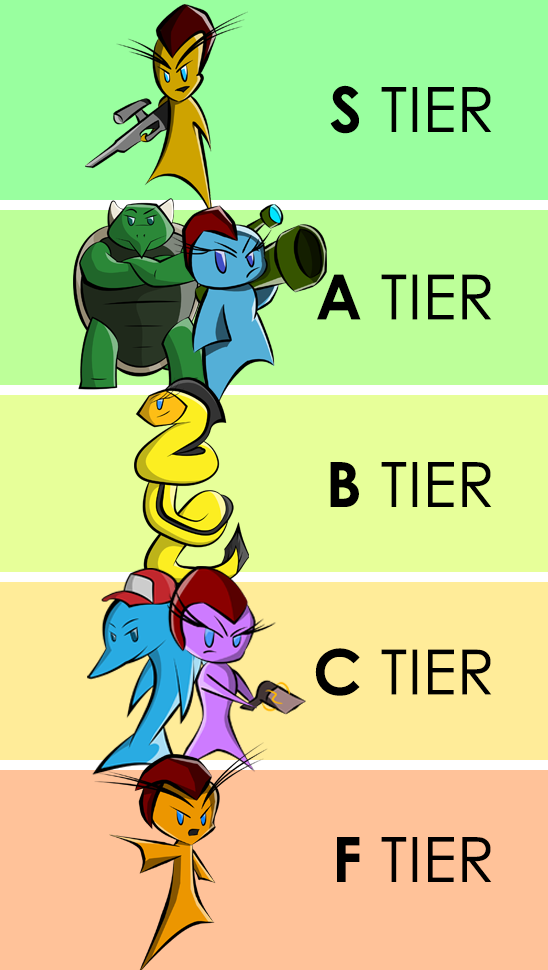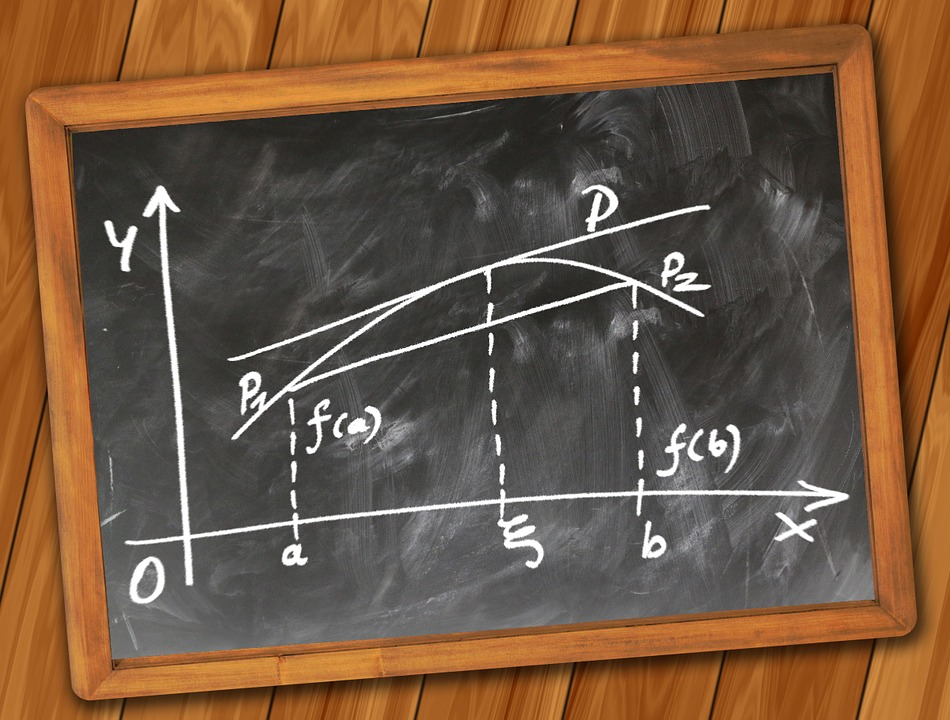-

Leveling Up in Fingeance
Leveling up. For some, it’s the best feeling in gaming. In a flash, you’re bigger, stronger, better at everything. If you’ve ever pulled an all-nighter to ding in EverQuest or logged into WoW just to burn rest experience, you’ll agree when I say that leveling is a pleasure, and addiction, and a way of life.
And at Escape Industries, we feel that we’ve been handling leveling up totally wrong.
Stephen is busy hammering away at the Fingeance Demo due out next week, so I’m seizing the authorial reins to deliver a rant on progression systems and how we can handle them better. This covers a large and ongoing battle within our team, so I feel obliged to throw out a TL;DR for anyone skimming:
- Characters start too complex. We cram too many uses and special control schemes into the starting gadgets.
- Characters end too simple. At end-game, characters feel just like statted-up versions of their earlier selves. We want options that meaningfully change or deepen each character’s role.
- Death to difficult controls. We’ve dabbled in numerous gadget control schemes that confuse newcomers and wrong-foot veterans. We’re going all in on simple one-touch, instant-action gadgets.
- All hail add-on gadgets. We’re considering adding augments that attach new longer-cooldown gadgets to your ship. Each player is capped at two add-on gadgets, in addition to the regular two gadgets.
The War of the Wolves
Fingeance, alongside every other game on earth, has two vicious wolves tugging it in opposite directions. The first wolf, Canis Noobus, has no idea what he’s doing. He is fresh to the game and overwhelmed by everything that’s going on. He wants simple controls, clear tasks, and narrow, obvious options. The second wolf, Canis Veteranus, is crusty-eyed and beset by ennui. He has seen it all and done it all. He craves freshness, complexity, challenge — something to surprise him and relieve him of the familiar.
A successful game caters to both Noobus and Veteranus. Games fail without Noobus, and communities fail without Veteranus.
But the wolves hate each other. Deny it all you want. Talk about how your favorite community loves new players because they’re the “lifeblood of the game.” You know it’s a lie. If it weren’t for newbies, bad Magic cards wouldn’t be ubiquitous (see point #3), Smash Bros. Brawl would have kept wavedashing, and Hearthstone wouldn’t have taken two years to add new deck slots.
But the point of this article isn’t to bash newbies. Instead, we’ll look at how we can tweak Fingeance’s level up system — the shop — and make it better for newbies and vets alike.
“A good idea is something that does not solve just one single problem, but rather can solve multiple problems at once.”
—Shigeru Miyamoto
What Newbies Want
At venues like 2D Con, we’ve gotten to watch a bevy of beginners pick up the game. Across the board, the point-of-failure has been gadgets. People get dodging, shooting, dying, and scrap. They don’t get gadgets. For us, this is a catastrophe, since gadgets carry almost everything that makes Fingeance special. Without them, we lose all the teamwork and RPG-inspired roles that make Fingeance fun. In the eyes of these new players, we were just another shoot-em-up.
But let’s dig deeper. Here’s an artist’s representation of four people playing Gil, Sparky, Bubbles, and Spike:

Man, look at the fun they’re having. Okay, now let’s get a close-up on people playing Dorsa, Finn, and Flipper:
Yikes. Now, behind the silly stock images, there’s a serious message: certain characters were very unpopular over that weekend. Here’s a rough tier list, ranked by enjoyment:
People had a ball with Bubbles and Spike, and Gil proved to be an absolute joy. On the other hand, Dorsa and Flipper drew confused looks, and Finn caused more than one player to set the controller down and walk away. With Finn being our main character (our Mario!), this was a serious issue.Here’s the common thread: the simpler the character’s gadgets, the more fun people had. What’s more, this doesn’t just hold true for new players. An informal poll of frequent players and Fingeance designers found almost identical results (Flipper and Sparky climb a spot, while Spike falls).
What Pros Want
This is a harder question. Outside of our office, there are no Fingeance pros. Not yet.
Let’s extrapolate from some of our favorite games.
- Pros want balance. A “flatter” power level means more options are viable, leading to more skill in decision-making.
- Pros want variety. As the people with the most experience, pros both crave and benefit from new and different things.
- Pros want counters. Armed with full knowledge of game systems, pros the power to select “tech” or “counter-picks” to best attack challenges.
- Pros want difficulty. What is a pro without challenges to overcome?
Now, let’s see what we can do to meet those needs while helping newcomers at the same time. Hint: this is where we get to leveling up.
Tilting the Learning Curve
Fingeance, as of 2D Con, had a learning curve that was horribly flat. Characters started at a moderate level of complexity, and remained nearly unchanged until the end of the game. We believe we can better serve every player by tilting the learning curve: making everything simpler at level 1, but offering far more interesting complexity by level 7.
Early Game Changes: Starting Gadget Simplicity
In the early game, we want everything to be dead simple. Players, new and old alike, will be settling into the rhythm of dodging and shooting, so we want to cut down on extraneous controls. Here’s our plan:
- Gadgets are instant-action. Nothing fancy. All gadgets are now push-to-use. No push-to-toggle (Like Finn’s Rocket Barrage), no hold-to-use (Like Dorsa’s Pickrocket), and no radial menus (Like Finn’s Rally Cry).
- Gadgets have clear results. Gadgets need a clear bottom line. “That deals damage.” “This freezes things.”
- Gadgets have big tells. Every gadget has to have a unique sound and launch/impact graphics to communicate exactly what happened and where.
- Gadgets are low-cooldown. If you missed what the gadget did the first time, you can use it again a few seconds later.
Unlockable characters may, on rare occasion, break rules 1 and 4.
Shop Changes: Add-On Gadgets
As the game progresses, we want characters to learn some new tricks. Starting at level 2, every shop scene has the chance of offering one or more add-on gadgets. These are new special abilities that can be used independent of the character’s built-in gadgets. Here are some specifics:
- Add-on Gadgets are mapped to new buttons. On an XBox controller, they’ll be (X) and (Y).
- Players are limited to 2 add-ons. Once you’ve selected two, further add-on gadgets will not appear in the shop.
- Add-on Gadgets have longer cooldowns. For the most part, these are treated as superpowers and panic buttons. Expect to use them strategically.
- Add-on Gadgets expand character roles. We’ll use add-on gadgets to let characters explore new roles or empower existing ones.
Changes in Action: Fixing Finn
So, let’s see how these apply to our favorite mis-managed Mario: Finn.
First things first: we’re dumpstering Finn’s old gadgets. They’ve been replaced with the Rampage (peep this hot tweet) and the Last Stand (which shields allies). Both these gadgets fulfill our four-point criterion: they have one-push controls, clear effects, brand-new sounds and animations, and can be used about once every 6 seconds. Good stuff.
Now onto leveling up. As we make augments for Finn, we’re building around a handful of themes. Here are a few that may make it into the final game:
- The Hero
- Role: Backline DPS.
- Add-On Gadgets: Long-range instant damage.
- Augments: Self-buffs for dealing gadget damage; Gadget damage bonuses.
- The Avenger
- Role: DPS and Secondary Tank.
- Add-On Gadgets: Toughness boosts and health recovery.
- Augments: Rewards for shielding damage; Rewards for surviving at low health.
- The General
- Role: Support.
- Add-On Gadgets: Team-wide buffs and heals.
- Augments: Cooldown reduction; Gadget shielding bonuses.
Leveling Up Wrap Up
I hope you enjoyed this brief look into leveling up in Fingeance! Comments? Let us have it on Twitter.
-



